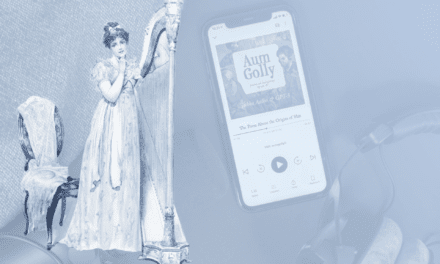
What Is a Galley Proof, and Why Do You Need One?

A galley proof, also known as an advance copy, ARC (advance reader copy), uncorrected proof, or just galley or proof, is a crucial part of the publishing process. Galley proofs are typically printed or released in small quantities and are distributed to reviewers, booksellers, and other industry professionals to help build buzz and interest for upcoming releases or reprints of backlist titles.
What is a galley proof?
Galley proofs are books in the pre-publication stage that are sent out to reviewers and those who may have an interest in them. Publishers send them out before the final version of a book is printed and distributed. They are usually publishing-ready except for a final proofread and are not meant for sale or general release as they occasionally contain minor errors and placeholder elements.
The name has a long history in the book world, dating all the way back to the 1600s. The term “galley” comes from the days of letterpress printing, where typesets were arranged in a long, narrow tray called a “galley”. “Proof” on the other hand, refers to the process of verification for fidelity and accuracy. When galleys were still used for printing, an early limited run would be printed on a “proof press” for the purposes of verification and proofreading.
While technology has changed, we still use the same terminology. While each term for a galley proof has its own history and use case, these terms are now used mostly interchangeably.
What formats do galley proofs come in?
Galley proofs have traditionally been unbound manuscript print runs, with no embellishment sent out to proofreaders for final verification. Now, however, “galley” or “proof” has become more synonymous with what would traditionally be considered an “uncorrected proof”.
These days, the most common galleys distributed are in ebook format, PDF, or paperback. Paperback proofs will have some design elements in place, like a hint at colour and cover design, the book’s tagline, and any author blurbs the book may have already received. They are also very rarely sent out as unbound manuscripts.
Physical copies are more expensive to produce, so ebook galleys are becoming more and more common. Sites like Edelweiss and NetGalley mean that readers can more easily request review copies of the books they’re interested in, and they also give self-published authors a platform where they can reach potential readers.
Above is an example of a printed uncorrected proof of Erin Belieu’s ‘Come Hither Honeycomb’ from Copper Canyon Press.
Why do you need galleys?
A galley proof is an essential marketing tool that can help you build buzz and anticipation for your book. By providing early access to your work to industry professionals and potential readers, you can generate valuable reviews, social media buzz, and word-of-mouth recommendations that can help you sell more copies.
If you plan on any kind of pre-release marketing, then having a pool of readers who have already read, and can recommend your work is absolutely essential. Booksellers and librarians are essential to this, as if you can get them excited about an upcoming release they’ll be more likely to hand sell or recommend your work. This is especially important if you want to maximise your day-one sales through some kind of pre-order campaign.
The more reviews you have in advance of your release, and the more people talking about your book, the better. And the best way to get people talking about your work is to let them read it!
When should you send out ARCs?
The timing of galley distribution is critical. You want to give people enough time to read your book and write a review, but you also want to make sure that the reviews are fresh and relevant when your book is released. A general rule of thumb is to send out ARCs or have them available for request about three to four months before your book’s publication date.
It’s important to remember, that while many galleys are sent out right before the final proofreading and design elements are in place, they are, in all essentials, completed manuscripts. Galley proofs are not drafts.
Many first-time writers make the mistake of sending out proofs for feedback like they would to beta readers. This sends the wrong message to readers, as the assumption is that the work that they are reading is of the same quality and standard as they can expect from the published work. Nothing will get you bad reviews and poor press faster than sending out an unfinished ARC.
Above is an example of a digital galley of R.F Kuang’s ‘Yellowface‘ from Harper Collins
Who should receive ARCs?
Thankfully, with the advent of digital galleys, it’s easier than ever to get proofs into the hands of readers. You want to be strategic about who you target, as you don’t want to limit your audience by giving too many copies of your book away for free, but you also want to make sure you get your book into the hands of readers who will be able to increase your audience.
Galley proofs should be sent to anyone who can help you market and sell your book. This includes book reviewers, social media influencers (like BookTokers or BookTubers), bloggers, booksellers, librarians, and other industry professionals. You can also offer galleys as a giveaway or prize to your fans on social media or your website to generate a bit more buzz.
Sites like NetGalley and Edelweiss can also help you widen your pool of readers if you place your work on their platforms. It allows readers to request your book directly, giving you valuable insight into the kind of readers who are interested in your work and encouraging reviews.
A galley proof is an essential marketing tool for any writer who wants to sell more books. By providing early access to your book to industry professionals and potential readers, you can generate valuable buzz, reviews, and word-of-mouth recommendations that can help you build an audience for your book — an essential component for any pre-release marketing strategy.




























